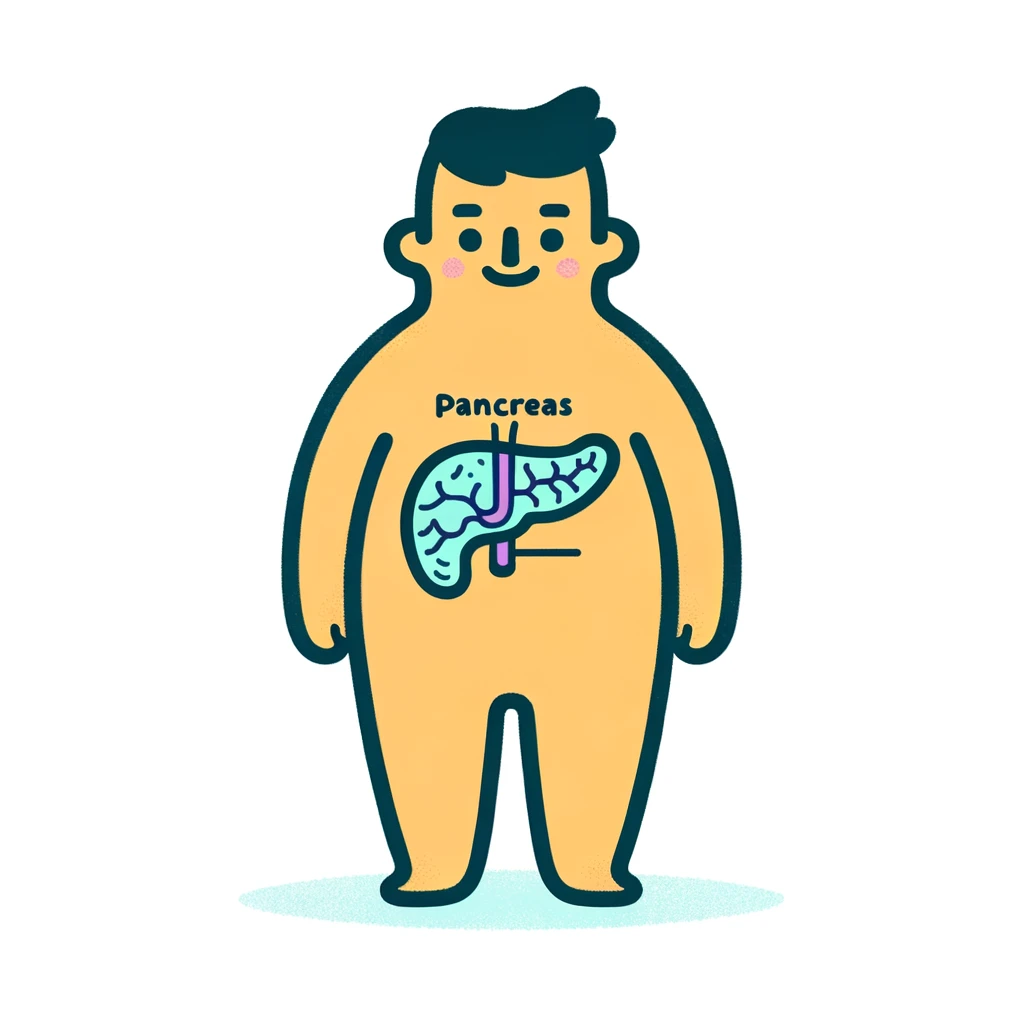Semaglutide is the active ingredient in Ozempic and Wegovy (used als subcutaneous ingejctions) and Rybelsus (oral medication). Ozempic are Rybelsus are approved for the treatment of type 2 diabetes and Wegovy is approved for weight loss.
Semaglutides are GLP-1 Receptor agonista (glucagon-like peptide-1 receptor agonists). They mimic the action of a naturally occurring hormone called GLP-1 (glucagon-like peptide-1), which helps regulate blood sugar levels.
Semaglutides have been around for decades. They have been used to treat type 2 diabetes. But in recent years their effect on reducing weight have gained momentum. It turns out GLP-1 Receptor agonists are effective in reducing weight.
This effect (weight loss) seems more apparent in obese patients without diabetes than in patients with diabetes. One trial has shown that obese patients with diabetes taking semaglutides experienced 40% less weight loss than obese patients without diabetes.
Their effects are based on 4 main mechanism of actions:
- Stimulating insulin secretion in response to high blood sugar levels.
- Inhibiting the release of glucagon (a hormone that raises blood sugar levels).
- Slowing gastric emptying, which reduces the rate at which glucose enters the bloodstream.
- Promoting a feeling of fullness, which can aid in weight loss.
They are administered in the form of subcutaneous injections once weekly (Ozepmic & Wegovy) or as tablets taken orally 1 time a day (Rybelsus). Rybelsus is the first GLP-1 agonist on the market that is administered orally. It is only approved for the treatment of type 2 diabetes.
GLP-1 agonists in general and Semaglutide specifically should be avoided by people with a personal or family history of Medullary cell carcinoma (MTC) or MEN 2 Syndrome (Multiple Endocrine Neoplasia syndrome type 2).
Patients with pancreatitis and type 2 diabetes with high cardiovascular risk are advised to have regular check ups and lab work. If signs of abdominal pain, vomiting, visual impairments occur, they should seek medical care as soon as possible.
One glycemic control trial reported 0.3 cases per 100 patient-years under Ozempic versus 0.2 cases per 100 patient-years under a comparator treatment.
Patient-years is a measure that combines the number of patients and the amount of time each patient is observed. For example, if 100 patients are observed for one year, that equals 100 patient-years. Similarly, if 50 patients are observed for two years, that also equals 100 patient-years.
0.3 cases per 100 patient-years means that if you had 100 patients observed for one year, you would expect to see 0.3 cases of the event. If you had 1,000 patients observed for one year, you would expect to see 3 cases of the event, and so on.
Another trial lasting for two years did not show an increased risk of acute pancreatitis under semaglutide: 0.27 cases per 100 patient-years under Ozempic versus 0.33 cases per 100 patient-years under placebo.
There is a high risk of diabetic retinopathy complications for patients with type 2 diabetes and high cardiovascular risk:
Several trials reported a higher incidence of diabetic retinopathy complications under semaglutide: 3% with semaglutide versus 1.8% with placebo. This effect is probably due to the rapid improvement of hyperglycemia (especially HbA1c) in patients with type 2 diabetes.
Diabetic retinopathy is a diabetes-related condition that affects the blood vessels in the retina, the light-sensitive tissue at the back of the eye. High blood sugar levels can cause damage to these blood vessels, leading to vision distortion and, in extreme cases, blindness.
There is a slightly higher risk of gallbladder diseases such as cholelithiasis and cholecystitis:
2.2% (36/1,642) under semaglutides versus 1.2% (27/1,644) under placebo. This risk is more evident in patients taking semaglutides orally (Rybelsus) than in patients taking subcutaneous injections (Ozempic & Wegovy). The increased risk was seen following more than 26 weeks of treatment with doses equal to or higher than 1.0 mg/weekly.
In January 2024 the FDA reviewed reports on increased suicidal thoughts and actions under Semaglutides. They concluded there is evidence suggesting increased risk for suicidal thoughts and actions for patients taking Semaglutides.
Common side effects (dose-dependent):
0.5mg/weekly: Nausea 16%, Diarrhea 8.5%, abdominal pain 7.3%, vomiting 5%, constipation 5%.
Resources
https://dom-pubs.onlinelibrary.wiley.com/doi/full/10.1111/dom.14990
https://www.accessdata.fda.gov/drugsatfda_docs/label/2017/209637lbl.pdf
